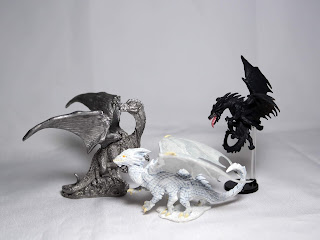I don't believe that it was ever explicitly stated, but I think that everyone understood that this iconic Trampier illustration was of a magic mouth.
I had some left over Kneadatite that I was using to fill some gaps in a minature, so I decided to put it to good use by trying to replicate the magic mouth from the picture.
I'm mostly happy with how it came out, but I'll probably do a bit of sanding to adjust some of the contours around the mouth.
I also need to figure out how I want to model the vaulted arches of the passageway without making things overly complicated.
As far as commercial miniatures go, there are two that I am aware of.
The first is the Citadel Magic Mouth Doorway (Fantasy Specials 2).
I stripped the old paint off of this model a long time ago, but never got around to re-paint it.
The other is the Grenadier Talking Door from the Dungeon Items set (Wizards & Warriors SS04).
This piece is pretty hard to find, but you do see it every now and again.
Renault R40 от First to Fight. Литники, детали.
9 hours ago

















































